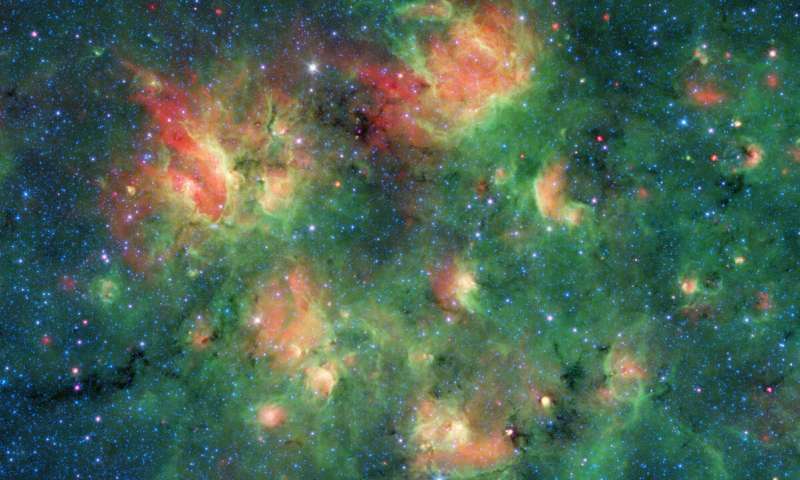A paper in Science Advances – see https://doi.org/10.1126/sciadv.aav37693 … uses data from a Chinese satellite system, the 'Dark Matter Particle Explorer', in order to masure cosmic ray protons up to the energy of TeV. The object of the satellite based telescope, nicknamed Wukong (the monkey king), is to study the proportions of dark matter by taking a closer look at high energy gamma rays and electrons. It is also in order to study the possible origins of cosmic rays by analysing heavy nuclei and high energy electrons, and to study the nature of propagation and acceleration of cosmic rays – an admirable threefold quest. Mainstream scientists 'believe' most cosmic rays are produced by supernova explosions. Are they going to get a rude awakening? See https://phys.org/news/2019-09-chinese-satellite-cosmic-rays.html
The next story is about bubbles – see https://phys.org/news/2019-09-spitzer-starry-region.html … where we have an image of a cloud of gas and dust in space full of bubbles inflated by wind and radiation form massive young stars ….
 … each bubble is 10 to 30 light years across and full of thousands of stars. The region, above, lies in the Milky Way galaxy. The image comes from NASAs Spitzer Space Telescope.
… each bubble is 10 to 30 light years across and full of thousands of stars. The region, above, lies in the Milky Way galaxy. The image comes from NASAs Spitzer Space Telescope.
